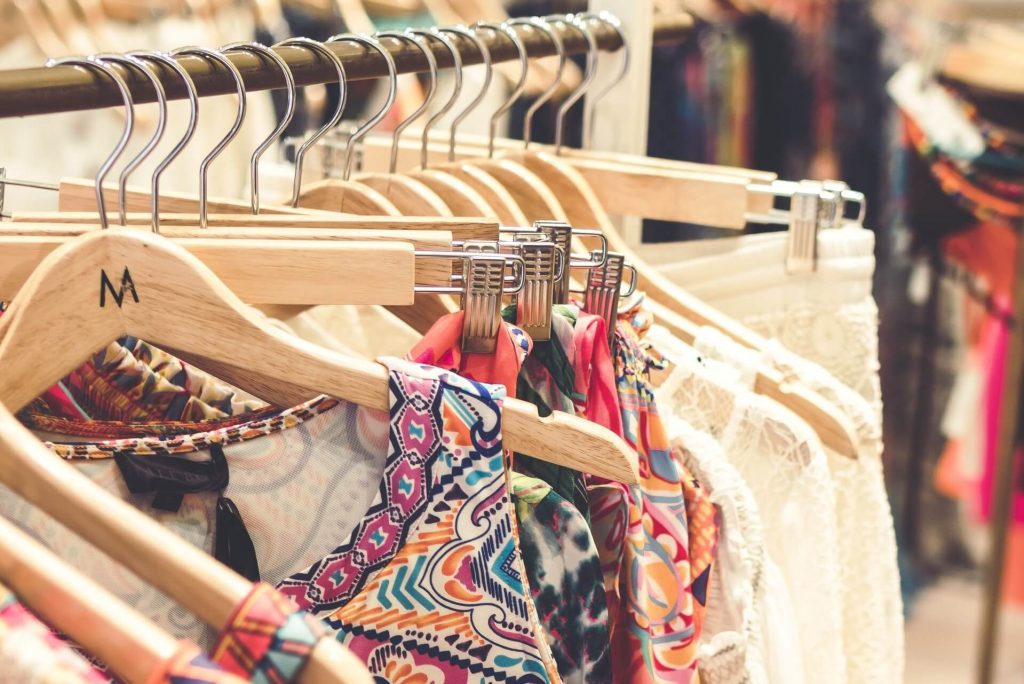What you buy will determine what you eat, what products you use and the kind (and amount) of waste that you will create.
For this reason, it’s important to take a moment to think about your shopping habits and the environmental impact of them.
Here are some things to keep in mind.
Only Buy What You Need
Try to separate the things you want to buy from the things you actually need.
For food and groceries, try to pick one item from your shopping list each week and don’t buy it. If you really struggle without it, then it stays on the list. If not, then maybe you don’t really need it.
For clothes shopping, or shopping of any kind, ask yourself whether you really need this new product? Can you get by without it?
These are the questions we all need to ask ourselves in order to cut down on the waste we create.
Cutting down on unnecessary purchases is a cheaper, healthier and more sustainable way to go.
Make a List
I already mentioned them above but shopping lists are a great way to ensure you stick to what you need.
Don’t get me wrong, a little flexibility is fine. But if you’re going to the shops to buy bread and then find yourself coming home with a a tub of ice-cream, a new pair of shoes and a pop-up gazebo, then maybe you need to reign it in a little!
Keeping a list will help you stay on track and avoid impulse buying.
Beware of Sales
Speaking of impulse buying….
Everyone loves a bargain, and sometimes sales can be a great way to find high quality products for less.
But just as often they can be excuses to buy things that you don’t really need. Be honest with yourself, if you hadn’t seen the sale sign would you still “need” it?
If you’re a regular impulse buyer, it might be safer to avoid the sales racks entirely!

Limit Your Online Shopping
Online shopping is both a blessing and a curse. On the one hand you have access to thousands of eco-friendly and ethically made products. But on the other hand there’s no limit to the amount of unnecessary items you can fit in your basket.
But all of the same ideas apply online. Don’t get pulled in by sales or flashy impulse buys.
Know what you want when you go online, buy it, then log off!
Quality over Quantity
I’ll never criticise someone for buying a cheaper product when they’re living on a budget. Because in that case it’s important to save money where you can.
However, if you have the money to buy a higher quality, long lasting product, then I think it’s worth making the investment.
A cheaper version might seem appealing, but it won’t last, and you’ll end up having to spend more money in the long run.
Cheap disposable products are one of the biggest environmental problems facing us today as they inevitably end up in landfills or oceans just months after being bought.
One high quality product is a much more sustainable choice than four or five cheaper versions. And is also more likely to be ethically and responsibly made.
Shop Second-Hand
Before you go spending big money on a brand-new purchase, pay a visit to your local second-hand shop.
Buying something pre-owned is a sure-fire way to reduce waste, save money and pick up some interesting and unique items.
Second hand clothes are a great start, but you can find pretty much anything pre-owned. Electronics, furniture, books, toys and household appliances are all worth checking out.
Local second-hand websites like Gumtree, Dondeal and Adverts can also be great places to find deals.
Buy Local Produce
If you are buying something new, then local is the way to go.
Not only are you supporting local businesses, you’re also reducing transport emissions and reducing the need for chemicals, preservatives and packaging.
Local food products will also be much fresher and often cheaper than alternatives from half way across the world.
And in developed countries, locally made clothing and household products will likely be far more ethically and responsibly produced.
Look for Sustainable Products and Brands
Voting with your wallet is one of the most powerful ways you can make a difference, so it’s well worth supporting businesses that prioritise environmental issues.
Also look out for certifications such as the FSC, MSC (Forest and Marine Stewardship councils respectively) and others that denote environmentally friendly practices.
Energy efficient and eco-friendly goods are also worth keeping an eye out for. But always keep in mind that just because it’s environmentally friendly, doesn’t mean you need to buy it.
Use what you have, then buy green when you need to!

Avoid Plastic Packaging
While some packaging is necessary to keep products fresh and undamaged, you should still opt for items with little to no packaging where possible.
Examples to avoid are single use plastic shopping bags and produce bags, as well as cling film, flimsy plastic bottles and non-recyclable plastic packaging.
Get yourself some small reusable bags for fruit, veg and other loose items.
Better yet, see if you have a zero waste shop nearby. These shops allow you to refill your own containers with all your favourite foods and household products, making them the ultimate waste saving way to shop.
If packaging is unavoidable try to check that it is recyclable or reusable.
Materials like cardboard, glass and metal are best, but even hard plastic can often be reused.
Head over to my Sustainable Swap List post to find more low waste shopping ideas!






